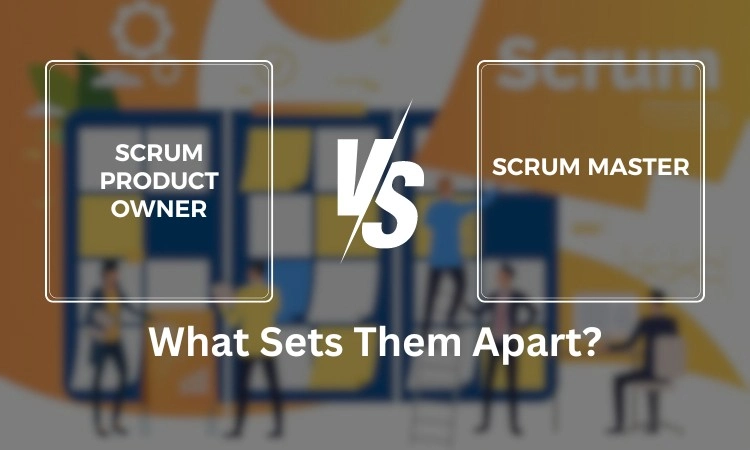Understanding The Scrum Framework
Before diving into the specific roles, it’s important to have a basic understanding of the Scrum framework. Scrum is an Agile methodology designed to help teams work together more effectively. It emphasizes iterative progress, collaboration, and flexibility. The Scrum framework typically involves a Scrum Team consisting of the Scrum Product Owner, Scrum Master, and Development Team. Each role has its own set of responsibilities and areas of focus, contributing to the overall goal of delivering high-quality products incrementally.
The Role Of The Scrum Product Owner
The Scrum Product Owner is the visionary behind the product. They are responsible for defining the product vision, managing the product backlog, and ensuring that the team is delivering value to the customer. The Product Owner acts as the primary point of contact between the stakeholders and the Scrum Team, translating customer needs and business goals into actionable user stories and requirements.
Key Responsibilities Of The Scrum Product Owner
- Defining the Product Vision: The Product Owner is responsible for crafting a clear and compelling vision for the product. This vision serves as a guiding star for the entire team, ensuring that everyone is aligned on what they are building and why.
- Managing the Product Backlog: The Product Owner creates, prioritizes, and maintains the product backlog, which is a dynamic list of all features, enhancements, and fixes that need to be delivered. The Product Owner ensures that the backlog is continuously updated based on feedback and changing priorities.
- Stakeholder Management: The Product Owner acts as the bridge between the Scrum Team and external stakeholders, including customers, business leaders, and other departments. They gather requirements, manage expectations, and communicate progress to ensure that the product aligns with business objectives.
- Maximizing Value: The Product Owner’s primary focus is on maximizing the value delivered by the team. They make decisions about what the team should work on next, balancing the needs of the customer with the goals of the business.
Skills And Qualities Of A Successful Product Owner
- Strong Communication: The ability to articulate the product vision, negotiate priorities, and manage stakeholder expectations is crucial.
- Strategic Thinking: A successful Product Owner needs to think long-term, aligning the product roadmap with broader business goals.
- Customer Focus: Understanding customer needs and translating them into actionable user stories is essential for delivering value.
- Decision-Making: The Product Owner must be decisive, making tough choices about priorities and scope.
The Role Of The Scrum Master
While the Product Owner focuses on the “what” and “why” of the product, the Scrum Master is concerned with the “how.” The Scrum Master is a facilitator, coach, and servant leader for the Scrum Team. Their primary responsibility is to ensure that the team adheres to Scrum practices, helping them to work more effectively and efficiently. The Scrum Master is not a traditional project manager; instead, they empower the team to manage themselves, removing obstacles that impede progress.
Key Responsibilities Of The Scrum Master
- Facilitating Scrum Events: The Scrum Master is responsible for organizing and facilitating key Scrum events, such as Sprint Planning, Daily Standups, Sprint Reviews, and Sprint Retrospectives. These events are crucial for maintaining the rhythm of the team and ensuring continuous improvement.
- Removing Impediments: The Scrum Master identifies and removes any obstacles that prevent the team from achieving their goals. This can range from resolving conflicts within the team to addressing external dependencies.
- Coaching the Team: The Scrum Master acts as a coach, guiding the team in Scrum practices and helping them to self-organize. They also mentor team members in Agile principles and practices, fostering a culture of continuous improvement.
- Shielding the Team: The Scrum Master protects the team from outside distractions and interruptions, ensuring they can focus on delivering high-quality work during the sprint.
- Promoting Collaboration: The Scrum Master fosters an environment of collaboration, encouraging open communication and teamwork. They help the team to resolve conflicts and work together more effectively.
Skills And Qualities Of A Successful Scrum Master
- Leadership and Servant Leadership: The Scrum Master leads by serving the team, ensuring they have what they need to succeed.
- Facilitation Skills: The ability to facilitate productive meetings and discussions is critical for a Scrum Master.
- Problem-Solving: A Scrum Master must be adept at identifying and resolving issues that could hinder the team’s progress.
- Empathy and Emotional Intelligence: Understanding the team’s needs and fostering a supportive environment is key to building trust and collaboration.
Key Differences Between Scrum Product Owner And Scrum Master
- Focus Area: The Product Owner is focused on the product itself—what is being built, for whom, and why. The Scrum Master, on the other hand, is focused on the process—how the work is being done and how to improve the team’s effectiveness.
- Stakeholder Interaction: The Product Owner interacts extensively with external stakeholders to gather requirements and manage expectations. The Scrum Master primarily interacts with the Scrum Team, ensuring they are following Scrum practices and removing impediments.
- Decision-Making: The Product Owner has the final say on what gets built and in what order. The Scrum Master does not make decisions about the product but instead guides the team in how they work together to build it.
- Role in the Team: The Product Owner is a key decision-maker and strategist, while the Scrum Master is a coach and facilitator, ensuring the team operates smoothly within the Scrum framework.

